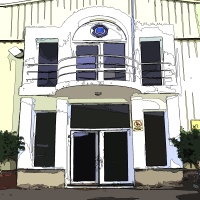|
|
|
FACILITIES -
INFRAESTRUCTURE |
The research group
develops its research at the following facilities:
|
Experimental
Marine Culture Unit
Oceanographic
Centre of the Canary Islands
Spanish Institute of Oceanography |
Laboratory of
Animal Physiology
Dept. Animal Biology
University of La Laguna |
 |
EXPERIMENTAL
MARINE
CULTURE UNIT
OCEANOGRAPHIC CENTRE OF THE CANARY ISLANDS
SPANISH INSTITUTE OF
OCEANOGRAPHY |
|
The Oceanographic Centre of the Canary Islands has a Culture Unit
exclusively dedicated to the research in aquaculture. The Culture
Unit is fully equipped, including hatchery, nursery, on-growing area
and storing tanks, allowing the development of studies on a wide
range of fields related to the culture techniques of marine fish and
cephalopods.
Since its
creation in 1980, the facilities have been expanded and renovated
several times
(1983,
1986, 1995,
2008)
to suit the progress and needs of research.
|
| TECHNICAL DATA
8000 m2 total area, including two buildings (900 and 1000 m2)
and several outdoor facilities. Although the infrastructure is
very versatile, it can be divided in the following main areas:
- 3 areas for reproduction with tanks of different types
including: 8 m3 rectangular concrete tanks (Building 1), 10
m3 fiber square tanks (Building 2) and 500 m3 race-way
concrete tanks (outdoor) for large-sized species.
- Egg incubation room with 15 to 100 l fiber containers.
- 2 areas for larval rearing (one on each building) with
100 to 3000 l. fiber tanks.
- Mesocosm unit (large larval rearing tanks and greenhouse
for plankton culture).
- 2 areas for nursery and nutritional/physiological
studies with 1000 to 4000 l. fiber tanks.
- Areas for grow-out and fish stock maintenance which
includes large capacity outdoor tanks (50 to 250 m3).
- Areas for live food production, consisting of:
- 1 phytoplankton culture room (isothermal conditions)
- 2 rotifer culture rooms (one with isothermal
conditions)
- 1 Artemia incubation room.
- Auxiliary rooms
- Food storage and preparation
- Water filtration
- Cleaning and disinfection
- Specific technical equipment for on-land culture units
- Well for seawater uptake, water pumps, water
distribution network and drainage channels
- Air Compressors and air distribution system
- Generators
- Workshop and warehouse
LABORATORIES
- Microscopy and stereoscopy equipped for
photography, camera and image analysis
- Physico-chemical analysis of water with
electronic devices
- Physiology and Genetics laboratory:
spectrophotometer, multi-mode microplate reader, PCR,
electrophoresis and gel documentation system, laminar flow
cabin
- Reproduction laboratory: biopsia, hormonal
treatments, tagging systems PIT
- General laboratory equipment: analytical
balances, centrifuges, ultra-freezer, ice machine, muffles,
stoves, autoclave, thermostatic bath, fluorometer, lab water
purification system, pHmeter, heating magnetic stirrer,
vortex, microwave, computer equipment, etc.
|
|
 |
LABORATORY OF ANIMAL PHYSIOLOGY
DEPT. OF ANIMAL BIOLOGY
UNIVERSITY OF LA
LAGUNA (ULL) |
The Laboratory of Animal Physiology of the ULL has been working in this
area for over 20 years, and during this time it has been provided with
all the necessary equipment for biochemical analysis of tissues and
organs of fish and aquaculture feeds, as well as for the study of fatty
acid metabolism by incubating isolated fish cells with radiolabeled
fatty acids.
|
|
LABORATORY
EQUIPMENT
- Gas Chromatograph - Mass spectrometer
- Densitometer
- HPLC
- Spectrophotometers
- Khjeldahl
- Culture unit with laminar flow cabin and CO2 incubator
- Muffles, stoves, microwave
- Ultra-freezer (-80ºC), freezers (-20ºC) and ice machine
- Lab water purification system
- Centrifuges
- Analytical balances
- pHmeter
- Air compressor
- Heating magnetic stirrer, vortex, mechanical
homogenizer, nitrogen evaporation system, vacuum pumps,
sonicator, rotary cacuum evaporator, thermostatic bath,
thermoblock
- Microscopy and stereoscopy
- Small aquarium including several 1m3 fiber tanks with
closed recirculating water system, to carry out trials with
a limited number of fish
|
|
|